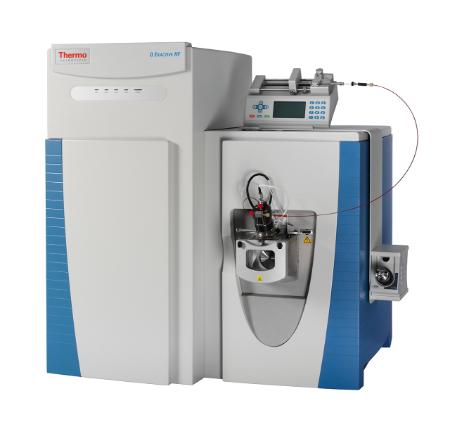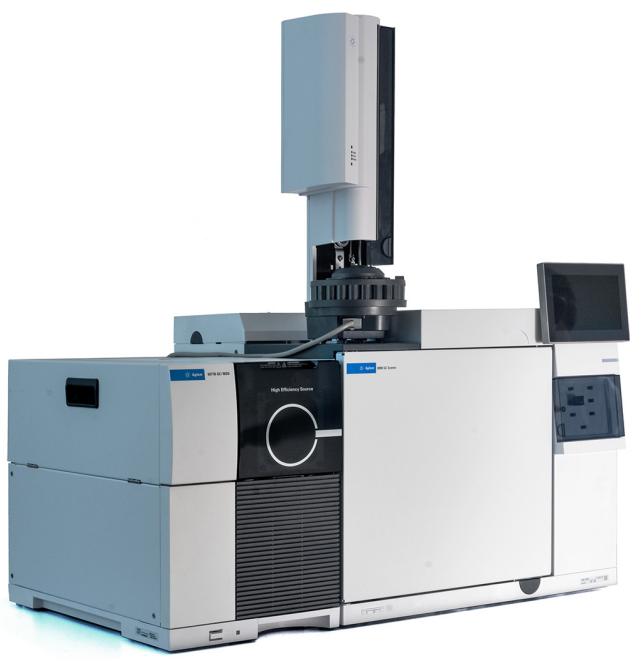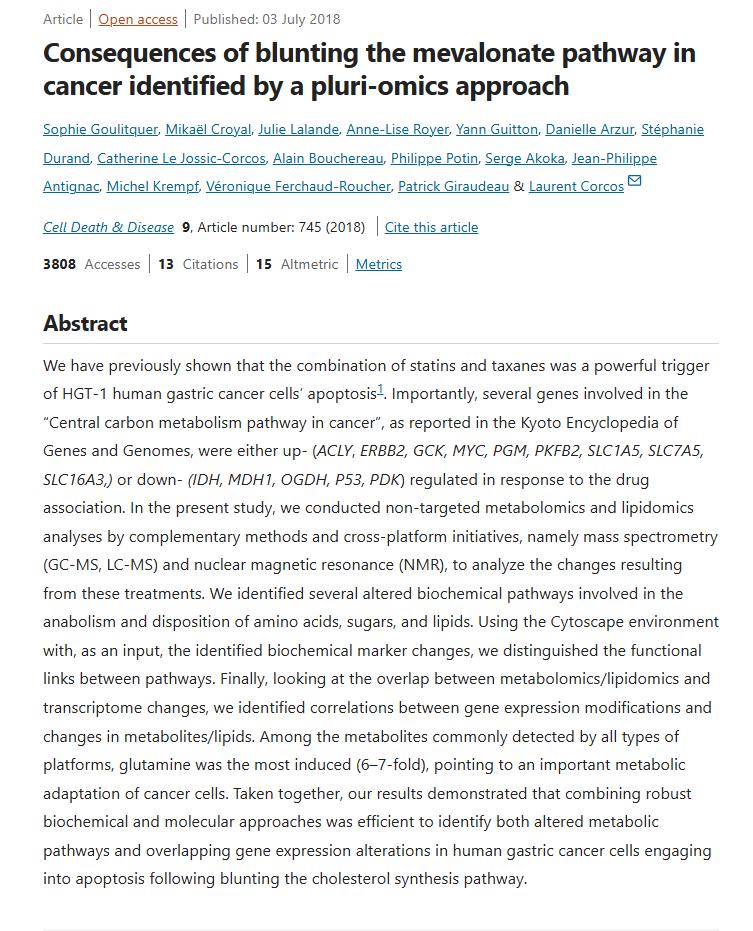Mevalonate Pathway Analysis Service
Creative Proteomics offers mevalonate pathway analysis services, including profiling key intermediates like HMG-CoA and mevalonate, HMG-CoA reductase activity assays, and quantification of isoprenoids such as ubiquinone. These services support research on metabolic regulation, cardiovascular health, and drug efficacy, using advanced technologies like UHPLC-MS/MS and GC-MS for accurate and reliable results.
Submit Your Request Now
×- Define
- What We Provide
- List Metabolites Quantified
- Technology Platforms
- Sample Requirements
- Demo
- FAQ
- Case Study
- Publications
What is Mevalonate Pathway?
The mevalonate pathway, also known as the HMG-CoA reductase pathway or isoprenoid pathway, is a crucial metabolic pathway found in eukaryotes, archaea, and some bacteria. This pathway is responsible for synthesizing a variety of essential biomolecules, including sterol isoprenoids like cholesterol and non-sterol isoprenoids, which are involved in many cellular functions. The pathway begins with acetyl-CoA and produces two key five-carbon building blocks, isopentenyl pyrophosphate (IPP) and dimethylallyl pyrophosphate (DMAPP). These intermediates are fundamental for creating isoprenoids such as cholesterol, coenzyme Q10, and all steroid hormones.
The pathway is widely recognized for its role in cardiovascular health. A critical enzyme in this pathway, HMG-CoA reductase, is targeted by statin drugs, which lower cholesterol levels by inhibiting this enzyme's activity. Beyond cholesterol synthesis, non-sterol isoprenoids generated in this pathway, such as ubiquinone and dolichol, are essential for mitochondrial function, protein glycosylation, and cellular signaling. Recent research highlights that inhibiting non-sterol isoprenoids might have therapeutic potential in areas like cancer, autoimmune diseases, and Alzheimer's disease.
The pathway begins with the conversion of three molecules of acetyl-CoA into HMG-CoA, followed by the conversion of HMG-CoA to mevalonate (MVA) via HMG-CoA reductase, the rate-limiting step. After two phosphorylation steps, MVA is converted to 5-pyrophosphomevalonate (MVAPP) and then to IPP and DMAPP. This series of transformations culminates in the production of a range of isoprenoid derivatives that serve various cellular functions.
While numerous methods exist to detect specific intermediates in the mevalonate pathway, the simultaneous detection of all intermediates remains challenging due to the differences in their structure and physical properties.
Mevalonate Pathway Analysis Services Offered by Creative Proteomics
Comprehensive Profiling of Mevalonate Pathway Intermediates
We offer targeted profiling of essential intermediates, including acetyl-CoA, HMG-CoA, mevalonate, and IPP/DMAPP. This service supports research into pathway regulation, metabolic health, and the molecular mechanisms underlying therapeutic targets.
Enzyme Activity Assay for HMG-CoA Reductase
This specialized assay accurately measures the activity of HMG-CoA reductase, a key regulatory enzyme in cholesterol biosynthesis. It provides critical data for understanding enzyme kinetics and is valuable for studies on drug efficacy, metabolic control, and cardiovascular research.
Quantification of Isoprenoids
Our quantification service covers a range of isoprenoids such as dolichol, ubiquinone (coenzyme Q10), and isopentenyl-tRNA, which are essential in mitochondrial respiration, protein glycosylation, and cellular signaling pathways. This analysis supports studies on energy metabolism, cell growth, and therapeutic intervention.
Customizable Mevalonate Pathway Analysis Solutions
We offer flexible and customizable solutions for research projects with unique requirements, such as modified sample processing protocols, specific metabolite analysis, and tailored reporting formats. This approach ensures that each project receives data that is highly relevant and precisely aligned with its research goals.
List of Mevalonate Pathway We Can Detect
| Mevalonate Pathway Metabolites Quantified in This Service | |||
|---|---|---|---|
| Acetyl-CoA | HMG-CoA (3-Hydroxy-3-Methylglutaryl-CoA) | Mevalonate (MVA) | Mevalonate-5-Phosphate (MVAP) |
| Mevalonate-5-Pyrophosphate (MVAPP) | Isopentenyl Pyrophosphate (IPP) | Dimethylallyl Pyrophosphate (DMAPP) | Farnesyl Pyrophosphate (FPP) |
| Geranylgeranyl Pyrophosphate (GGPP) | Squalene | Cholesterol | Ubiquinone (Coenzyme Q10) |
| Dolichol | Isopentenyl-tRNA | ||
Technology Platforms for Mevalonate Pathway Analysis

Ultra-High-Performance Liquid Chromatography-Mass Spectrometry (UHPLC-MS/MS): Accurate quantification of pathway intermediates like HMG-CoA, mevalonate, and IPP/DMAPP, with high sensitivity and reproducibility.
Model: Thermo Scientific™ Q Exactive™ HF Hybrid Quadrupole-Orbitrap™

Gas Chromatography-Mass Spectrometry (GC-MS): Analysis of volatile and thermally stable metabolites, suitable for profiling non-polar isoprenoids and pathway end-products.
Model: Agilent 7890B GC System with 5977B MSD
Sample Requirements for Mevalonate Pathway Analysis
| Sample Type | Minimum Volume | Preservation Condition | Notes |
|---|---|---|---|
| Plasma/Serum | 200 µL | Store at -80°C | Collected in EDTA or heparin tubes. |
| Tissue (fresh or frozen) | 50 mg | Flash-freeze immediately | Store at -80°C; avoid repeated thawing. |
| Cultured Cells | ≥ 1 x 106 cells | Snap-freeze in liquid nitrogen | Wash with PBS, remove excess media. |
| Urine | 1 mL | Store at -80°C | First-morning collection preferred. |
| Plant Extracts | 100 mg | Freeze-dry, store at -80°C | Specify solvent used for extraction. |
Demo
FAQ
What steps are taken to ensure cross-sample consistency in complex analyses like the mevalonate pathway?
Ensuring consistency across samples is essential in complex pathway analyses. To achieve this, we use carefully optimized batch processing techniques where all samples from a single project are handled in the same analytical run whenever possible. Additionally, we include quality control samples and replicate standards throughout the analysis, which allow us to track instrument performance and detect any variability. Cross-sample consistency is further maintained by running calibration curves and validating recovery rates for each set of metabolites in the pathway, ensuring that data from different samples are directly comparable.
Can I submit small or low-abundance samples, and how do you enhance detection in such cases?
Yes, we can work with small or low-abundance samples by utilizing enhanced sensitivity techniques. When working with limited volumes or low concentrations of metabolites, we apply enrichment techniques like solid-phase extraction (SPE) or preconcentration methods before instrumental analysis. Additionally, our advanced UHPLC-MS/MS setup is calibrated to detect trace amounts of metabolites, making it ideal for low-abundance samples. If your project involves extremely limited sample amounts, please consult our team, as we may recommend specific preparation steps to maximize recovery and accuracy.
How do you address potential cross-reactivity in multi-metabolite detection?
In multi-metabolite analyses, structural similarity between metabolites can sometimes cause cross-reactivity, impacting quantification accuracy. To address this, we employ advanced separation techniques, like gradient elution UHPLC, to distinguish closely related compounds effectively. Our lab also uses multiple reaction monitoring (MRM) modes in mass spectrometry to specifically target and quantify metabolites, reducing the risk of interference. For highly similar isoprenoid structures, we validate with compound-specific standards and run spectral comparisons to confirm compound identities.
Are specific buffer systems or pH conditions recommended during sample collection to stabilize mevalonate pathway metabolites?
Yes, sample stability can be influenced by pH and buffer conditions. For plasma/serum samples, we advise collection with EDTA as an anticoagulant, as this prevents coagulation and minimizes enzymatic activity. For tissue samples, immediate flash-freezing helps maintain metabolite stability without the need for buffers. However, for specialized research or highly reactive metabolites, we may recommend specific pH-adjusted buffer solutions that inhibit unwanted reactions or degradation pathways, especially if samples cannot be immediately frozen.
Can you handle non-standard sample matrices (e.g., environmental samples, specific tissue types)?
Yes, our laboratory can accommodate non-standard matrices, though some may require specific handling adjustments or validation protocols. For uncommon matrices, we conduct initial tests to assess matrix compatibility with our analytical methods, and, if necessary, we adapt sample preparation techniques to account for matrix-specific factors. We also advise clients on collection and preservation techniques specific to these unique samples to optimize metabolite recovery and data quality.
Learn about other Q&A.
Case Study

Consequences of Blunting the Mevalonate Pathway in Cancer Identified by a Pluriomics Approach
Journal: Oncotarget
Published: 2018
- Background
- Materials & Methods
- Results
- Reference
This study explores how the inhibition of the mevalonate pathway, particularly through statin drugs like lovastatin, influences metabolic and lipidomic profiles in cancer cells, specifically HGT-1 human gastric cancer cells. Previous research has shown that combining statins with taxane drugs like docetaxel promotes apoptosis in these cells by disrupting cholesterol synthesis and post-translational prenylation, critical for the function of Ras and Rho proteins involved in growth signaling. Using a multi-platform approach integrating mass spectrometry (GC-MS, LC-MS) and nuclear magnetic resonance (NMR), this study identified over 100 metabolites with altered levels following treatment, emphasizing the potential of combining metabolomics, lipidomics, and transcriptomics to discover biomarkers for cancer cell apoptosis.
Cell Culture and Treatments
HGT-1 gastric cancer cells, along with AGS (gastric) and HCT116 (colon) cells, were grown in DMEM with 4.5 g/L glucose and 5% fetal bovine serum. Cells were treated at ~80% confluence with lovastatin (12.5 μM) and/or docetaxel (5 nM) for up to 36 hours, using DMSO as a vehicle control. Lovastatin treatment induced apoptosis at 36 hours, as indicated by morphological changes. Cells were then lysed in methanol for metabolite extraction.
HMG-CoA Reductase Activity
To measure HMG-CoA reductase activity, cell lysates were prepared and incubated with [14C]HMG-CoA and NADPH, followed by HPLC analysis. Enzyme activity was calculated as pmol/min/mg protein.
Metabolomics and Lipidomics Analysis
Samples were analyzed across five platforms: NMR (Bruker), GC-MS (Agilent), and three LC-MS systems (Thermo and Waters). Quality control (QC) samples helped correct analytical drift, with lipid markers having <30% RSD in QC samples retained. Key lipid and metabolite markers, including glutamine, were quantified by GC-MS and LC-MS.
Data Processing
Data normalization was performed using log10 and Pareto transformations. Principal component analysis (PCA) assessed treatment effects, with the RV coefficient verifying consistency across datasets. All analyses were conducted in FactoMineR and Workflow4Metabolomics.
Inhibition of HMG-CoA Reductase
Lovastatin, alone or in combination with docetaxel, suppressed HMG-CoA reductase activity, leading to a full halt in mevalonate production, as evidenced by the basal enzyme activity dropping from 18 ± 2 pmol/min/mg protein to undetectable levels. Docetaxel alone had no measurable impact on HMG-CoA reductase activity.
Principal Component Analysis (PCA)
PCA revealed clear separations between lovastatin-treated and non-lovastatin-treated samples, with the former showing strong metabolomic and lipidomic shifts across HGT-1 gastric, AGS gastric, and HCT116 colon cancer cell lines. Docetaxel's effects were less pronounced, reflecting its minimal impact on gene expression.
Cross-Platform Data Standardization and Biomarker Identification
A total of 111 metabolites and lipids were identified as significantly altered across treatment conditions. Glutamine was highly induced by lovastatin and the combination treatment, while spermidine levels decreased. Four metabolite classes—ceramides, phosphatidylcholines, triglycerides, and sphingomyelins—were notably distinct in the (lovastatin + docetaxel) group. Biomarkers identified by multiple platforms included glutamine, glutamate, myo-inositol, creatine, lactic acid, and fumarate.
Kinetic Metabolomic Analysis
The kinetic analysis showed progressive changes in metabolite levels, with increases across most metabolites at 36 hours in the (lovastatin + docetaxel) group. Fumarate and pantothenic acid levels decreased consistently across all time points.
Integration of Metabolomics, Lipidomics, and Transcriptomics
Data integration highlighted multiple upregulated genes in central carbon metabolism, including ACLY, ERBB2, and MYC, with corresponding increases in amino acids, citrate, lactate, fumarate, and other key metabolites. Downregulation of genes like P53, IDH, and MDH1 was observed, suggesting a reduction in P53-dependent apoptosis signaling and activation of MAP kinase pathways through ERBB2. The pathway analysis indicated that lovastatin treatments boost glucose uptake, amino acid synthesis, and lactate production, potentially increasing metabolic adaptations for cancer cell survival.
 Score plot of the "meta" PCA prepared from the calculated Dim1 coordinate from primary PCA analyses resulting from each data matrix.
Score plot of the "meta" PCA prepared from the calculated Dim1 coordinate from primary PCA analyses resulting from each data matrix.
 Combined network analysis of metabolites and lipids.
Combined network analysis of metabolites and lipids.
 PCA analysis of the kinetic effects of the (lovastatin + docetaxel) combination.
PCA analysis of the kinetic effects of the (lovastatin + docetaxel) combination.
Reference
- Goulitquer, Sophie, et al. "Consequences of blunting the mevalonate pathway in cancer identified by a pluri-omics approach." Cell Death & Disease 9.7 (2018): 745.
Publications
Here are some publications in Metabolomics research from our clients:

- Pan-lysyl oxidase inhibition disrupts fibroinflammatory tumor stroma, rendering cholangiocarcinoma susceptible to chemotherapy. 2024. https://doi.org/10.1097/HC9.0000000000000502
- UDP-Glucose/P2Y14 Receptor Signaling Exacerbates Neuronal Apoptosis After Subarachnoid Hemorrhage in Rats. 2024. https://doi.org/10.1161/STROKEAHA.123.044422
- Ketone bodies are mildly elevated in subjects with type 2 diabetes mellitus and are inversely associated with insulin resistance as measured by the lipoprotein insulin resistance index. 2020. https://doi.org/10.3390/jcm9020321
- Neddylation is required for perinatal cardiac development through stimulation of metabolic maturation. 2023. https://doi.org/10.1016/j.celrep.2023.112018
- Novakomyces olei sp. nov., the First Member of a Novel Taphrinomycotina Lineage. 2021. https://doi.org/10.3390/microorganisms9020301













